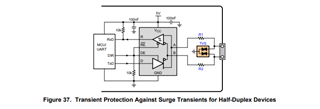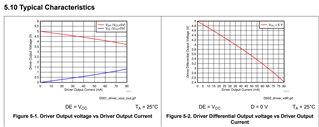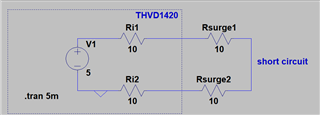Hello,
in the data sheet :SLLSEY3E –MAY 2018–REVISED MAY 2019
you find an application to protect the THVD1420 against surge:

R1 is a CRCW0603010RJNEAHP with maximum power loss of 1/3W.
The short circuit output current of the THVD1420 is 250mA.
In case of a short circuit the losses in the two resistors is approx. 1.25W.
0.625W for each resistor.
So this resistors protect in case of a surge, but burn down during short circuit on the signal lines?
Right?
BR Wilfried



